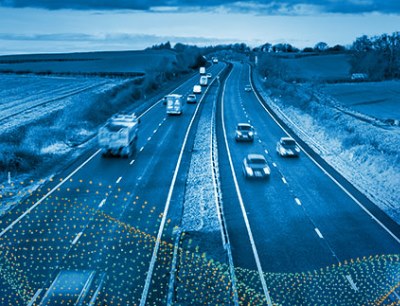
The Kistler Group has established an Innovation Lab to leverage hidden potentials of digitalization that are lying dormant in vast amounts of measurement data. Here in the Lab, the company’s experts work hand in hand with customers and R&D partners to develop intelligent analysis methods as well as smart data-based service solutions, optimally tailored to the problems facing each user. Thanks to sensors from Kistler, customers can collect data on dynamic measurands such as pressure, force, torque and acceleration in a diverse range of applications. But in many cases, this data harbors far more potential that has not yet been exploited.
"Many customers and partners are completely unaware of the potential that lies buried in their data - but we intend to change that! There are plenty of areas where we can deliver added value from our sensor technology with the help of data-based analyses and methods," according to Dr. Nikola Pascher, Head of the Innovation Lab. To achieve this, algorithms provide the basis for intelligent software that automatically supplies suggested solutions – and over the long term, this plays a key part in optimizing processes and generating forecasts. Apart from the goal of getting the most out of the data, the focus here is on knowledge exchange between Kistler and the users of its sensor technology. "Our Innovation Lab is the place where know-how meets the creativity that’s typical of the startup spirit. Here at Kistler, we have specialists on all the application areas for our sensors. We call on their expertise to help us develop the algorithms and smart service solutions. But we can also learn a lot from our customers. Most of all, they provide us with access to data from many different real-life application cases. That helps us to adapt our products so they are better able to meet the requirements in each situation," says Pascher, summing up the advantages that both sides gain from this collaboration.
During a Proof of Concept study, the team was able to use collected measurement values to calculate an algorithm that monitors force distribution throughout the cutting process; deviations from normal conditions are identified with the help of artificial intelligence. This solution is to be used as the basis for more efficient production with significantly reduced scrap rates. Pascher explains the potential of this development: "Instead of merely monitoring processes, we use the collected data to identify patterns and make accurate predictions about the quality of the manufactured products." In another test, the measurement technology experts at Kistler compared the data from Weigh In Motion stations over a period of several months. The primary purpose of these measurement stations is to collect data about the weight of heavy goods traffic so that overloaded vehicles can be taken off the road or sanctioned with fines. But even more information lies hidden in the data: for example, the experts were able to predict traffic peaks on certain sections of the highway with reliable accuracy. The data also proved that around one in three trucks are driving empty. This data could give traffic planners and authorities a basis for planning new infrastructure projects. Truck operators could also benefit from this information to plan their trips more efficiently. "The knowledge gained paves the way for new data-based traffic concepts," Pascher points out. "Data of this sort opens up many different possibilities for improving the protection of economic and ecological interests." Nikola Pascher and her colleagues at the Innovation Lab take a positive view of the future: "We’re still at the very beginning of these developments: in more and more sectors of industry, the coming years will see quantum leaps in the development of new solutions based on machine learning and artificial intelligence."